When we hear the word “Citrus” the first thing that pops up in our minds is definitely lemons or oranges. But to your surprise, these are not the only citrus fruits and vegetables. There is a long list of citrus fruits and vegetables; however, in this blog post, we will discuss the top 19 that are more commonly consumed by people around the world.
Citrus fruits and vegetables are enriched with vitamin C and other beneficial nutrients like fiber, flavonoids, folic acid, and potassium. Most commonly, they are consumed in the form of juices, even eaten raw or in a salad, and mixed with other vegetables and fruits. No matter how you eat them, they definitely kick your tastebuds with a tangy flavor and make you feel wow.
Health Benefits of Citrus Fruits And Vegetables
Eating brightly colored, sweetened oranges and mandarins on cold winter days is akin to infusing warm sunshine right into our souls, right? Citrus fruits are unmatched in taste, plus we all know they are extremely healthy for us. But, how exactly do citrus fruits and vegetables benefit our health? Here is all the information you need to know! Not that you needed any reason to eat these little bursts of flavor and sweet juice.
1.Citrus Fruits and Vegetables Fight Against Diseases!
Citrus foods are jam-packed with Vitamin C and other powerful compounds such as flavonoids and carotenoids. Studies show that these compounds have antioxidant & anti-inflammatory properties, meaning they fight diseases in your body. Any infectious cells, bacteria, or viruses that may enter and harm your body, these compounds fight against them to protect you.
2. They Strengthen Your Immune System
Likewise, they strengthen your immune system and help build & grow more white blood cells that fight external microbes. Especially, Ascorbic Acid is known for its powerful role in the immune system. According to research, eating just one medium orange keeps you safe from all kinds of seasonal diseases along with other chronic conditions.
3. Improve Your Skin Health
Vitamin C also plays an important role in collagen production in your body. Scientists link it to smooth, elastic, and younger looking skin. This means, that you can appear younger and have healthy skin just by eating citrus fruits and vegetables.
4. They Aid in Digestion
It is a known fact that fruits and vegetables are high in fiber which improves our gut microbiome, which in turn leads to a healthy digestive system. Fiber is also crucial for stool formation and preventing digestive issues like constipation, diarrhea, bloating, etc.
Citrus fruits in particular are a higher soluble fiber to insoluble fiber ratio that not only helps digestion but also lowers cholesterol.
5. Citrus Foods are Low in Calories and Help in Weight Loss
Almost all citrus fruits and vegetables are low in calories but high in fiber. You can eat as many of them as you want and still not gain weight. In fact, one report analyzed people’s eating habit and their weight over a 24 years period and found that those who ate more citrus fruits lost more weight than those who didn’t.
6. They Prevent Cancer & Diabetes
As said earlier, citrus foods fight diseases. Numerous studies have shown the link between eating more citrus fruits and low risk of different types of cancers. That’s why, regularly consuming citrus vegetables and fruits protect you from breast cancer, stomach cancer, pancreatic & esophageal cancer, etc.
Furthermore, Citrus fruits have a low glycemic index, meaning they are safe for diabetic people to eat.
7. They Lower the Risk of Stroke and other Neurological Illnesses
Citrus fruits and vegetables are also high in Potassium, an essential mineral responsible for fluid regulation and mineral balance in your body. It also reduces your risk of getting a stroke and other neurological disorders.
8. Keep you Hydrated
Citrus fruits have an extremely high water content. For example, oranges have an 81% water content, while grapefruits have almost 90% water content. Therefore, eating citrus fruits and vegetables keeps you hydrated even when you don’t drink enough water, especially in winter.
List Of Citrus Fruits And Vegetables
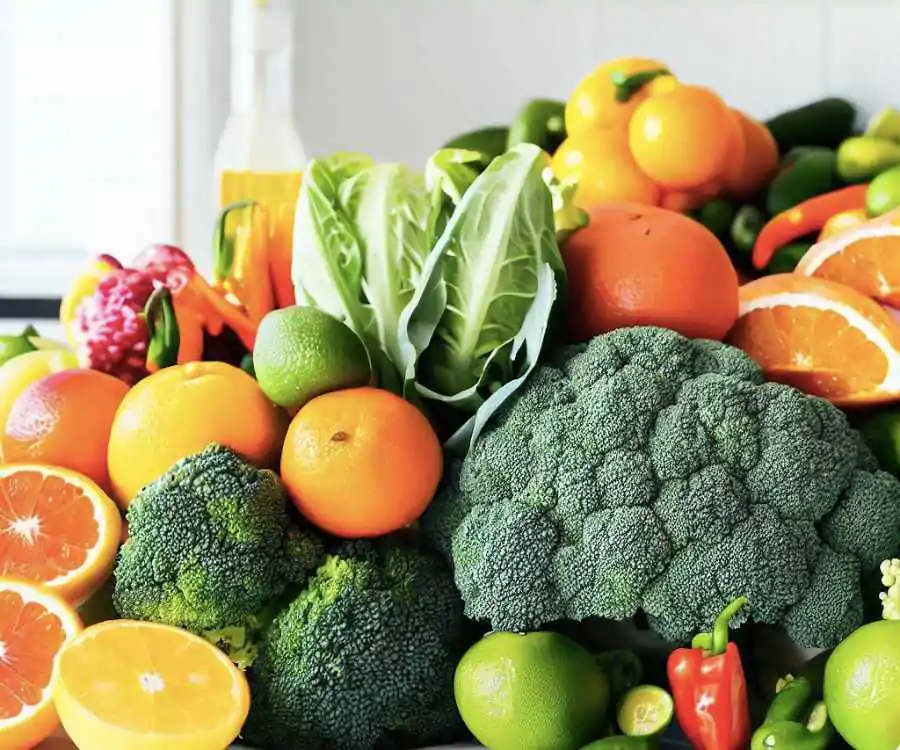
Let’s begin with the most common citrus fruit which is the Orange.
1. Oranges
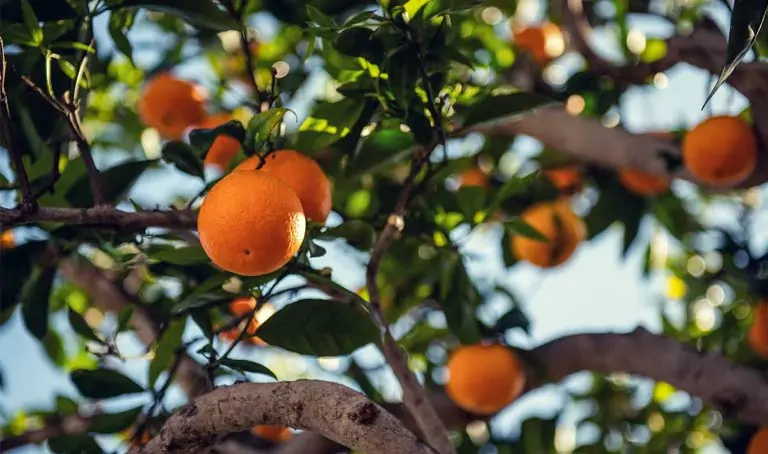
Oranges are the most commonly known citrus fruit and so it tops the list when we discuss a list of citrus fruits and vegetables. We might assume that there’s only one type of orange but that’s not true. Oranges have four types i.e. blood orange, Jaffa orange, navel orange, and Valencia orange. They are the kind of citrus fruit that is easily available anywhere and it’s a winter fruit. As they are citrus fruit, they are juicy, tangy, and sweet. The nutritional details of Oranges (medium):
| Calories | 62 |
| Protein | 1.2 grams |
| Fat | 0.2 grams |
| Carbohydrates | 15.4 grams |
| Fiber | 3.1 grams |
| Vitamin C | 70% of the Daily Value (DV) |
| Folate | 7% of the DV |
| Potassium | 6% of the DV |
2. Tangerine
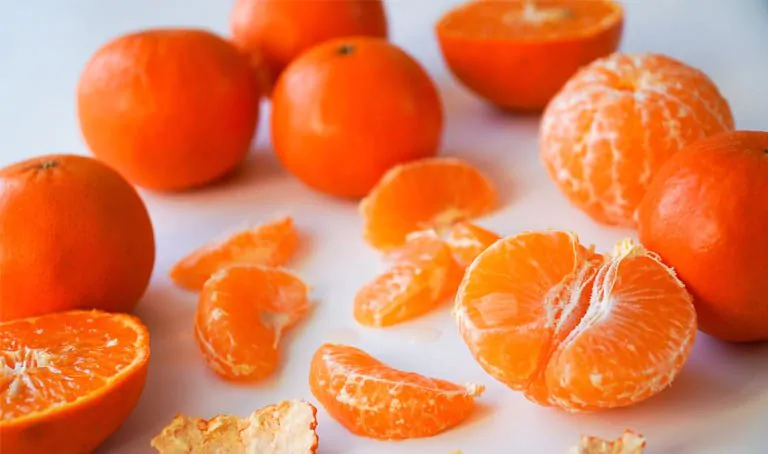
The next common name in the list of citrus fruits and vegetables is tangerine. Pretty much like oranges, tangerines slightly differ in taste as they are sweeter. That’s the reason their peel is used in chocolates and their pulp is a common ingredient in popular beverages. Nutritional details of Tangerine (medium):
| Calories | 47 |
| Protein | 0.8 grams |
| Fat | 0.3 grams |
| Carbohydrates | 12.1 grams |
| Fiber | 1.6 grams |
| Vitamin A | 14% of the DV |
| Vitamin C | 24% of the DV |
| Flavonoids | varies |
3. Lemon
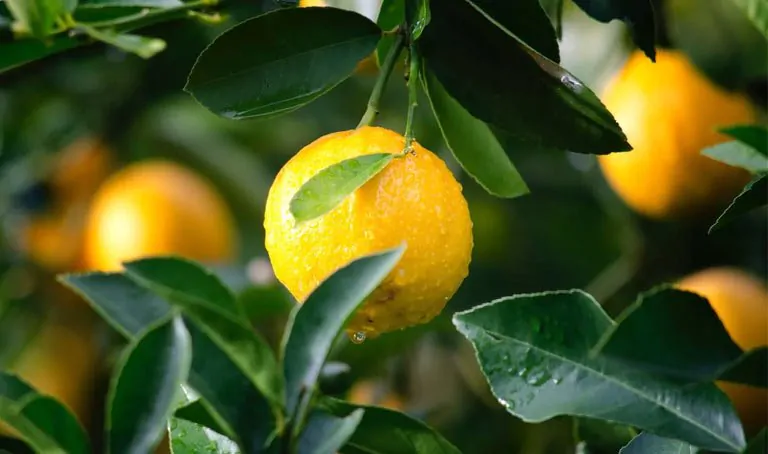
Lemon has a very common use in every household; be it your favorite drinks, garnishing your spicy dishes, making tarts, and even cleaning your products. And not just that, it’s also a popular ingredient in beauty products. The high citric level in lemons makes them ideal for lightening dark spots, making face masks, or removing marks on the skin. One Lemon (medium) contains:
| Calories | 24 |
| Protein | 0.9 grams |
| Fat | 0.3 grams |
| Carbohydrates | 7.8 grams |
| Fiber | 2.4 grams |
| Vitamin C | 44% of the DV |
| Folate | 2% of the DV |
| Flavonoids | varies |
4. Grapefruit

It wouldn’t be wrong to declare grapefruit as one of the healthiest citrus fruit in the list of citrus fruits and vegetables. They are not only attractive looking but also taste really good with a sweet and sour flavor. They are good for your heart health as well as helpful in losing weight. Grapefruit (1/2 medium) contains:
| Calories | 52 |
| Protein | 1.1 grams |
| Fat | 0.2 grams |
| Carbohydrates | 13.1 grams |
| Fiber | 1.6 grams |
| Vitamin C | 64% of the DV |
| Antioxidants | varies |
| Potassium | 5% of the DV |
5. Pomelo

Pretty much shaped like a pear, pomelo is a large fruit with a pink or white pulp. These are the two main types of pomelo; ones with the pink pulp are sour in taste whereas the ones with the white pulp are sweet. If you eat half of a medium-sized pomelo, you will gain the following nutritional values:
| Calories | 80 |
| Protein | 1.6 grams |
| Fat | 0.4 grams |
| Carbohydrates | 20.3 grams |
| Fiber | 3.6 grams |
| Vitamin C | 127% of the DV |
| Potassium | 11% of the DV |
6. Yuzu
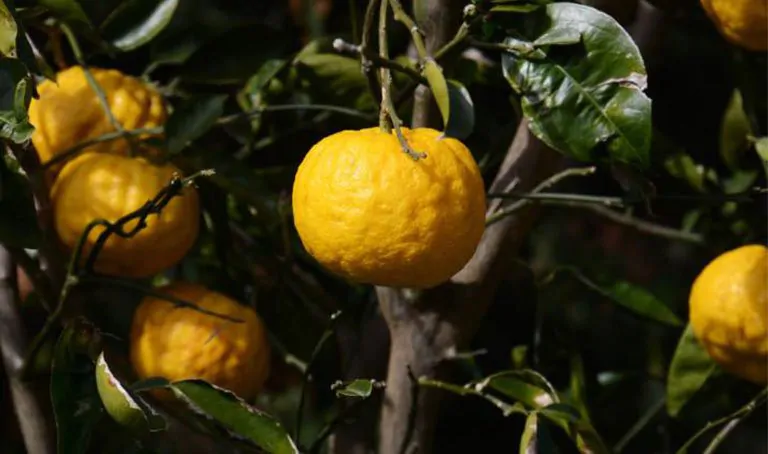
First originated in China, but now closely associated with Japanese and Korean cuisines, Yuzu is a hybrid citrus fruit. It is a mix of orange, lemon, and grapefruit. You can recognize it by its golden-yellow bumpy peel and bitter taste.
In fact, Yuzu is so bitter in taste that it is rarely eaten as is. Commonly, it is consumed with wild mushrooms. Its peel is used in many dishes such as salads, soups, stews, etc for aroma and mild flavor. In Korea, sweet yuzu marmalade is popular, which is also used to make healthy tea full of Vitamin C. Nutritional facts of Yuzu fruit is as follows:
| Calories | 53 |
| Protein | 0.8 grams |
| Carbohydrates | 13.3 grams |
| Fiber | 1.8 grams |
| Fat | 0.3 grams |
| Vitamin C | 59% of the DV |
| Vitamin A | 31% of the DV |
| Vitamin B6 | 5% of the DV |
| Thiamine | 5% of the DV |
| Flavonoids | Varies |
| Carotenoids | Varies |
7. Broccoli
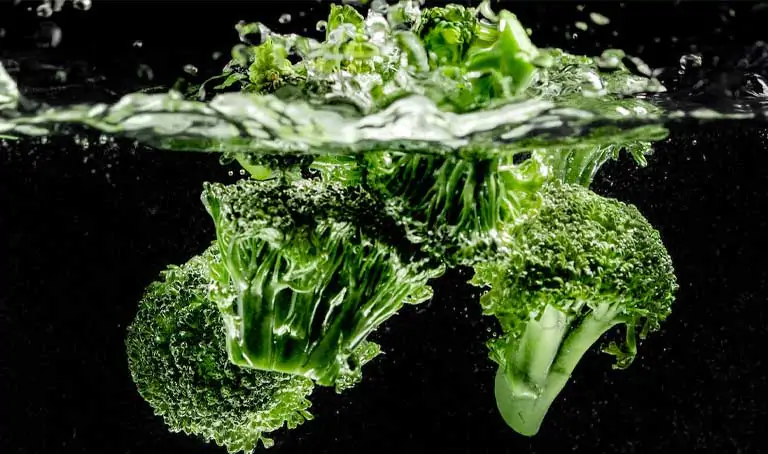
Broccoli is a citrus vegetable with several health benefits. It is rich in protein, potassium, fibers, and vitamin C. People like to have it in different ways; you can boil it and put it in a salad or can sautee it with butter and spices. As it helps digest food, it’s a commonly served side dish with many of your favorite food dishes in restaurants. Its nutritional values are:
| Calories | 55 |
| Protein | 4.3 grams |
| Fat | 0.6 grams |
| Carbohydrates | 11.2 grams |
| Fiber | 5.1 grams |
| Vitamin C | 135% of the DV |
| Antioxidants | varies |
Also Read: Weird Vegetables Previously Unknown to You
8. Bell Peppers

Bell peppers are found in different colors like green, yellow, and red, and they add versatility as well as provide rich nutrients to your favorite meals. The interesting fact is that they have almost double amount of vitamin C in them as compared to other citrus fruits and vegetables. Most people like it for how they look and add flair of colors to their dishes. 1 Bell Peppers (medium) contains:
| Calories | 37 |
| Protein | 1.5 grams |
| Fat | 0.5 grams |
| Carbohydrates | 8.9 grams |
| Fiber | 2.6 grams |
| Vitamin C | 157% of the DV |
| Antioxidants | varies |
9. Asparagus

Asparagus is another citric vegetable in the list and is enriched with high amounts of vitamin C and antioxidants. The distinguished feature of this vegetable amongst the list of citrus fruits and vegetables is that it is an immunity booster. And not just that, it makes delicious meals, especially when tossed in lemon and spices. One cup of Asparagus has:
| Calories | 27 |
| Protein | 2.9 grams |
| Fat | 0.2 grams |
| Carbohydrates | 5.2 grams |
| Fiber | 2.8 grams |
| Folate | 34% of the DV |
| Vitamin K | 56% of the DV |
| Potassium | 5% of the DV |
10. Kale
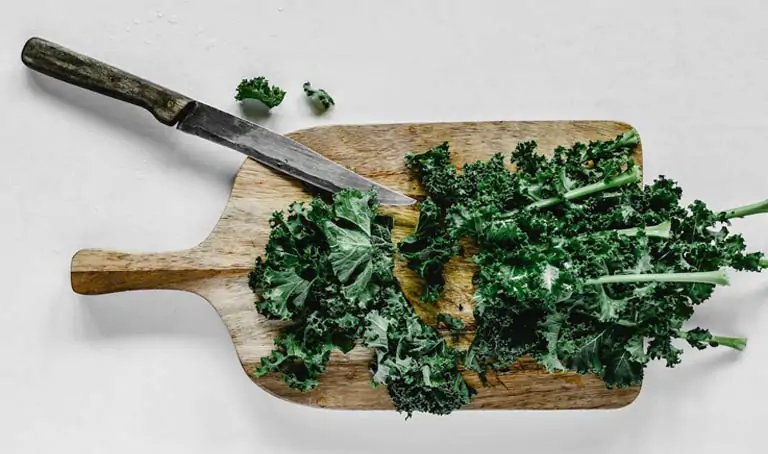
Kale is rich in vitamin C as well as in vitamin K. There are several ways to use this citrus vegetable; you can add it in a sauce, make a juice, or combine with other vegetables to make a salad. The following nutrients can be obtained by eating one cup of chopped kale:
| Calories | 33 |
| Protein | 2.9 grams |
| Fat | 0.6 grams |
| Carbohydrates | 6 grams |
| Fiber | 1.3 grams |
| Vitamin A | 206% of the DV |
| Vitamin C | 134% of the DV |
| Vitamin K | 684% of the DV |
| Antioxidants | varies |
11. Cabbage
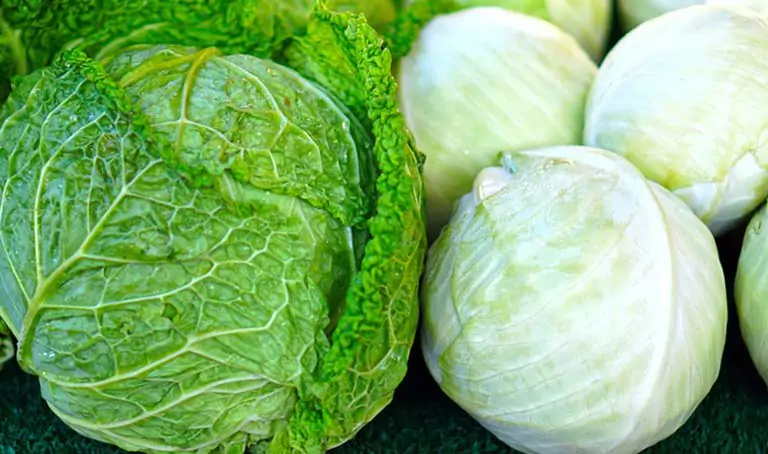
Cabbages are enriched with a lot of nutritional benefits as they contain vitamin C, magnesium, folate, and potassium. Cabbages are found in different two colors i.e. white and red (purple).
| Calories | 22 |
| Protein | 1.1 grams |
| Fat | 0.1 grams |
| Carbohydrates | 5.2 grams |
| Fiber | 2.2 grams |
| Vitamin C | 54% of the Daily Value (DV) |
| Vitamin K | 85% of the DV |
| Folate | 10% of the DV |
| Potassium | 5% of the DV |
12. Jalapenos

Our favorite hot pepper, Jalapenos is 92% water and full of essential micronutrients. Not only it is yummy, it is super healthy as well. Though most do not see it as citrus food, it is indeed high in ascorbic acid (vitamin C) and antioxidants. Jalapenos have a range of 4000 to 10,000 Scoville Heat Units. Generally, they are consumed green, but red and yellow varieties are also available if allowed to ripen fully. Here are the nutritional facts about Jalapenos pepper:
| Calories | 22 |
| Protein | 1.1 grams |
| Protein | 0.91 grams |
| Fat | 0.37 grams |
| Carbohydrates | 6.5 grams |
| Fiber | 2.8 grams |
| Vitamin C | 143% of the Daily Value (DV) |
| Vitamin B6 | 32% of the DV |
| Vitamin E | 24% of the DV |
| Folate | 7% of the DV |
| Niacin | 9% of the DV |
| Essential Minerals (Calcium, Iron, Magnesium, Potassium, Zinc, etc.) | Varies |
13. Gooseberry
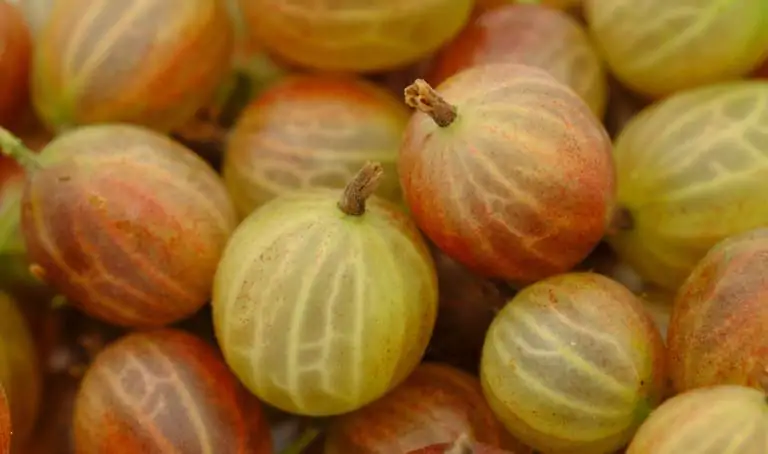
An underrated citrus fruit is gooseberry. It is filled with antioxidant properties. Moreover, the fruit is full of citric acid as well. Gooseberries are available in white, green, and yellow colors, so be sure to enjoy the variety. You can have the nutritious citrus fruit in the form of a jam or pickles. In addition, gooseberries are low in fat but rich in fiber.
The fruit has a crucial role in regulating weight. Gooseberries are advantageous to cancer patients. The fruit improves thinking and brain functions. You can also benefit from gooseberries if you were recently diagnosed with diabetes. Here is its composition
| Calories | 66 |
| Protein | 1 gram |
| Fat | Less than 1 gram |
| Carbohydrates | 15 grams |
| Fiber | 7 grams |
| Vitamin C | 46% of daily value |
| Vitamin B5 | 9% of daily value |
| Vitamin B6 | 7% of daily value |
14. Ginger
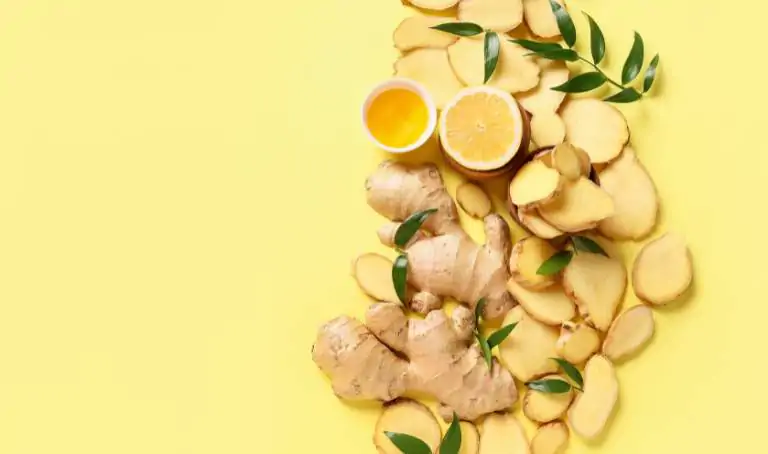
Let’s add another excellent citrus vegetable to the list! Ginger offers many advantages, including reducing inflammation inside the body. It also has beta-carotene. Ginger carries phosphorous and vitamin C for an internal health boost. The vegetable is a well-known remedy for cough and cold when brewed in teas because it enhances immunity.
Also Read: Black Ginger Benefits for Health
Moreover, using ginger is very easy too. An individual can add a small portion of ginger to the diet to improve digestion. You can also use ginger for frequent nausea or upset stomach complaints. Ginger will make your skin glow so you look healthy. 100 gram of ginger consists of:
| Calories | 80 |
| Cholesterol | 0 mg |
| Fat | 0.8 gram |
| Carbohydrates | 18 grams |
| Fiber | 2 grams |
| Vitamin C | 8% of daily value |
| Iron | 3% of the daily value |
| Vitamin B6 | 10% of the daily value |
15. Ugli

Ugli is an underrated citrus fruit because of its unattractive appearance. Unfortunately, the fruit is the definition of don’t judge a book by its cover. Ugli has the most sensational aroma, which will attract you to it. The citrus fruit is not as bitter as a grapefruit. However, it is sweeter than a tangerine.
Ugli is commonly found in Jamaica, where it has been cultivated for eight decades. The citrus fruit is rich in vitamin C, which is a wellness booster. The fruit is filled with collagen that makes skin and tissues look younger.
Furthermore, Ugli also has anti-inflammatory properties. It will reduce the inflammation in your blood. Eat it regularly if you were recently diagnosed with heart disease and diabetes. Lastly, Ugli is an excellent citrus fruit that will promote weight loss. The fruit will introduce fewer calories into your body. Its few servings will make your stomach full instantly.
| Calories | 47 |
| Protein | 1 gram |
| Fat | 0 grams |
| Carbohydrates | 12 grams |
| Fiber | 2 grams |
| Vitamin C | 90% of the Daily Value (DV) |
| Folate | 8% of the DV |
| Potassium | 4% of the DV |
16. Key Lime
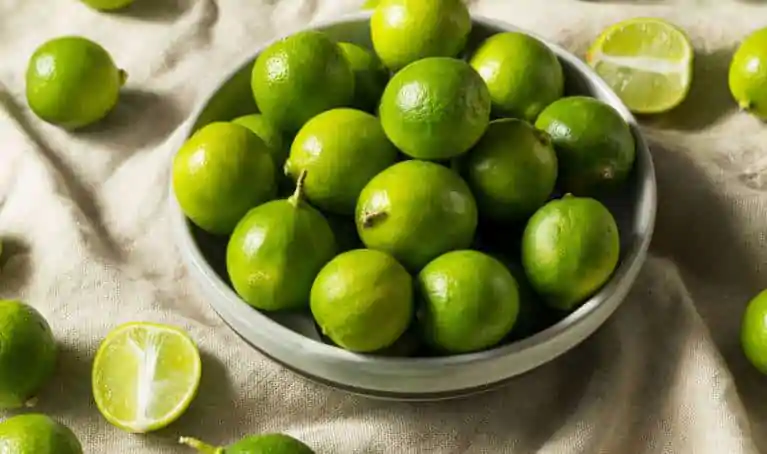
Key Lime is a much-awaited small and green citrus fruit. Even though it looks sweet, key Lime has a sour taste with an acidic undertone. Key limes are usually used in food and cooking to add flavor. Moreover, they are a long-lasting source of vitamin C as well.
Key Lime is also known as Mexican and West Indian Lime. The fruit blooms as a flower initially with very beautiful white petals. There is a delicate touch of purple at the tips, which is very beautiful. The citrus fruit originally belonged to South East Asia with a tree height of 16 feet. It needs direct sunlight to grow. The plant must be protected from cold winds and planted in well-drained soil.
| Calories | 30 |
| Protein | 0 grams |
| Fat | 0 grams |
| Carbohydrates | 10.45 grams |
| Fiber | 3 grams |
| Vitamin A | – |
| Vitamin C | 31.3 mg |
| Flavonoids | – |
17. Rangpur

Have you heard of Rangpur? It is a citrus fruit with a combination of lemon and orange. The plant’s botanical name is citrus limonia with Southeast Asian origin. It is abundantly available in Bangladesh. The citrus fruit is very high in acidic content, and they are used as a lime substitute in Bengali cuisine.
Its tree grows from 12 to 18 feet, where it needs constant exposure to the sun to bloom. The soil must also be slightly acidic, where the water must not stay. The fruit is available in winter with a soft flesh. You can slice the fruit into eight to ten segments. The aroma is juicy, floral, and smoky at the same time.
| Calories | 62 |
| Protein | 0 grams |
| Fat | 0 grams |
| Carbohydrates | 0 grams |
| Fiber | 0 grams |
| Vitamin B6 | 250 mg |
| Vitamin C | 6667 mg |
| Flavonoids | – |
18. Daidai
Daidai is widely consumed in Japan and has a bitter orange taste. Rather than eating it raw like a normal orange, people generally use it for flavoring purposes. It is due to the strong taste. Moreover, it is also widely used in Japanese medicines due to its digestive and therapeutic benefits.
Daidai fruit trees are sometimes grown ornamentally for their attractive foliage and fragrant blossoms. On the other hand, it contains compounds that can interact with certain medications and may cause adverse reactions to some people. So, if you have any underlying health conditions or are taking medications, you must limit their usage.
Following are the key nutritional facts:
| Calories | 37 to 66 |
| Fat | 0 to 0.1g |
| Sodium | Not available |
| Carbohydrates | 9.7 to 15.2g |
| Fiber | 0.4g |
| Sugars | Not available |
| Protein | 0.6 to 1g |
| Vitamin C | 45 to 90mg |
| Vitamin A | 290mcg |
| Phosphorus | 12mg |
| Calcium | 18 to 50mg |
| Iron | 0.2mg |
19. Rangpur Lime
It might resemble orange, but actually tastes like lime. Rangpur Lime or Citrus limonia has a highly acidic taste, making it appropriate for cocktails and juices. It is a hybrid between lemon and mandarin orange. The fruit is versatile and works well in baked products, curd, jam, marmalade, and cocktails.
It enhances the immune system, provides loads of Vitamin C, and helps in the process of digestion. Rangpur lime has been used in breeding programs to create hybrid citrus varieties with desirable traits due to its unique flavor and characteristics. These are the nutritional facts that will compel you to add it to your cuisines right away.
| Calories | 43 |
| Carbohydrates | 8g |
| Fiber | 2.8g |
| Protein | 0.6g |
| Fat | 0.3g |
| Vitamin C | 138% DV |
| Vitamin B6 | 5% DV |
| Calcium | 3% DV |
| Iron | 2% DV |
Wrapping Up:
Citrus fruits and vegetables are superfoods that can greatly improve your health. They are high in nutrients such as vitamin C, flavonoids, antioxidants, etc. which fight diseases, strengthen the immune system, and reduce inflammation.
According to research, eating citrus fruits daily can prevent cancer, diabetes, and several neurological illnesses. Moreover, their high soluble fiber content aids in digestion and improves gut health.
With so many options to choose from this list of citrus fruits and vegetables, we’re sure you won’t have any problem getting healthy! So, add these super delicious citrus fruits and veggies to your daily diet today and see instant health benefits!



